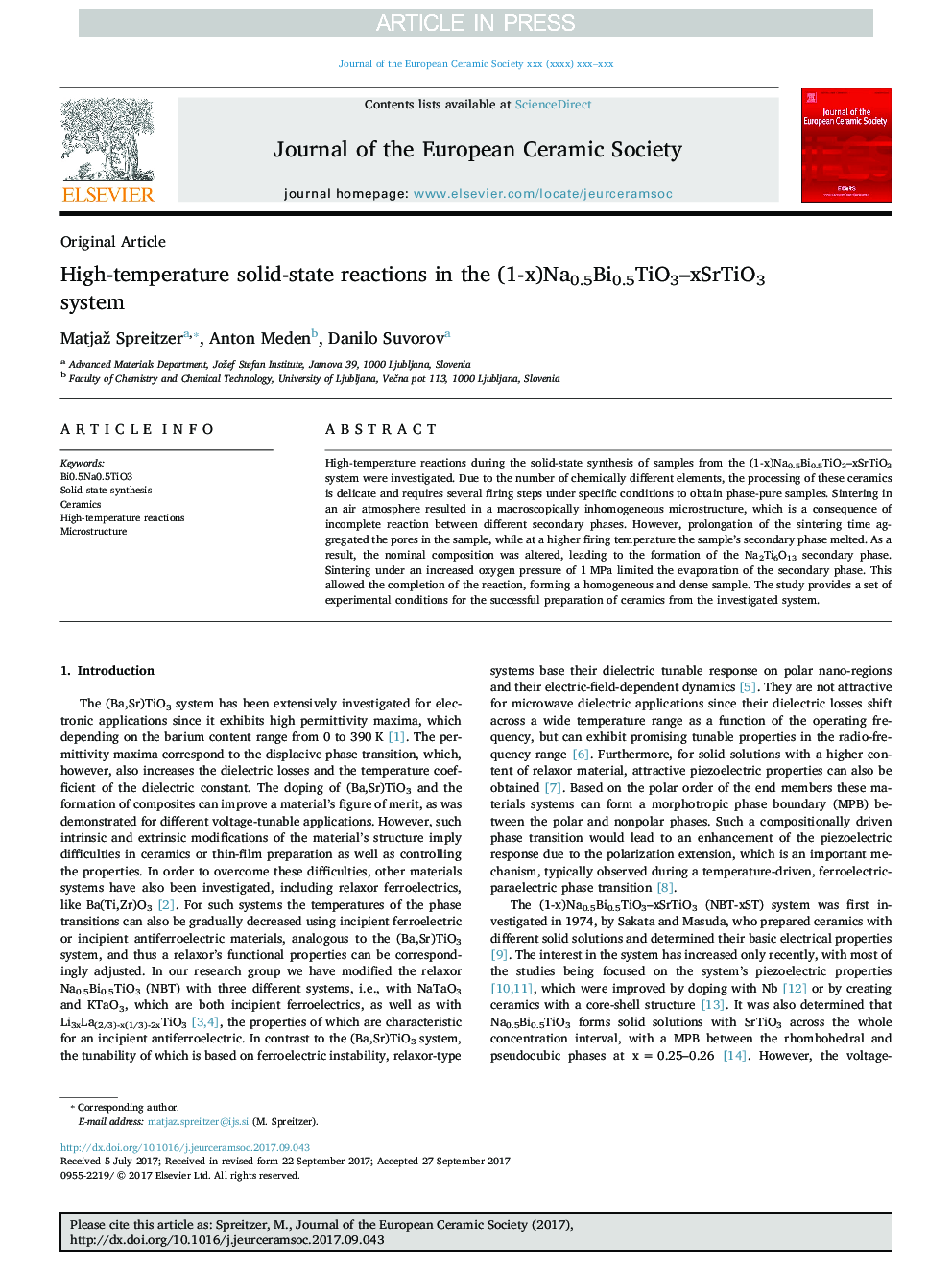| Article ID | Journal | Published Year | Pages | File Type |
|---|---|---|---|---|
| 7898654 | Journal of the European Ceramic Society | 2018 | 8 Pages |
Abstract
High-temperature reactions during the solid-state synthesis of samples from the (1-x)Na0.5Bi0.5TiO3-xSrTiO3 system were investigated. Due to the number of chemically different elements, the processing of these ceramics is delicate and requires several firing steps under specific conditions to obtain phase-pure samples. Sintering in an air atmosphere resulted in a macroscopically inhomogeneous microstructure, which is a consequence of incomplete reaction between different secondary phases. However, prolongation of the sintering time aggregated the pores in the sample, while at a higher firing temperature the sample's secondary phase melted. As a result, the nominal composition was altered, leading to the formation of the Na2Ti6O13 secondary phase. Sintering under an increased oxygen pressure of 1Â MPa limited the evaporation of the secondary phase. This allowed the completion of the reaction, forming a homogeneous and dense sample. The study provides a set of experimental conditions for the successful preparation of ceramics from the investigated system.
Related Topics
Physical Sciences and Engineering
Materials Science
Ceramics and Composites
Authors
Matjaž Spreitzer, Anton Meden, Danilo Suvorov,
